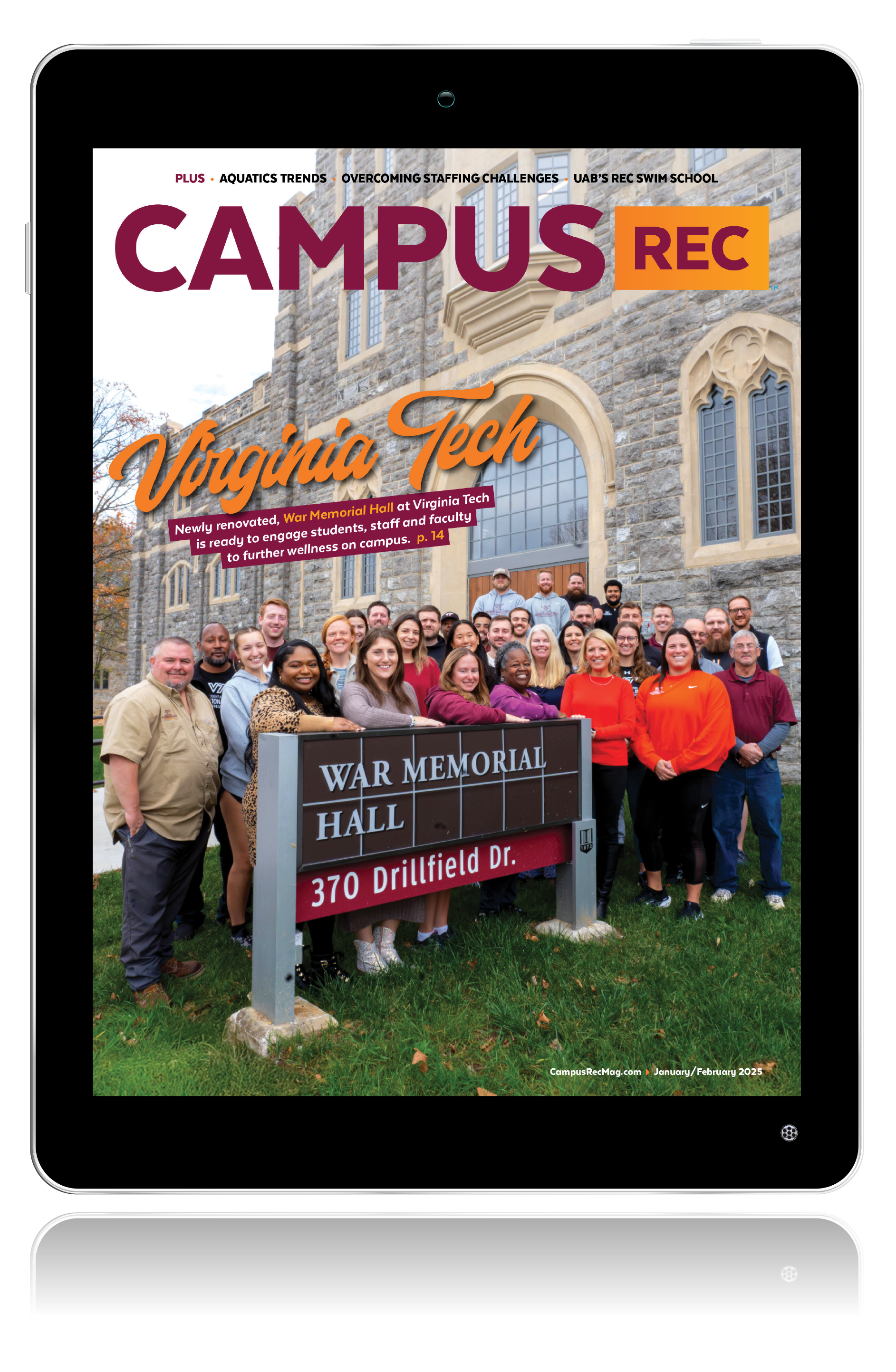Many of our institutions are facing critical strategic challenges such as fallout from the pandemic and shrinking student enrollment. These challenges are requiring us to change the way we look at our roles and the way we do things. One of the shifts in strategy we can use is around the idea of partnership and collaboration. There are tremendous opportunities for recreation departments to come together with other areas in their schools to make an impact on the future of the institution.
Working with others and giving up full control of our work is not always easy to do. When it comes to establishing partnerships and collaborating with others, it is most effective when we enter into it with an open-mind and positive outlook. Don’t think of collaboration as something we need or have to do. Instead, look at it for the opportunities it presents.
EXTRA CREDIT: Creative campus collaborations at universities across the nation that create unique programming opportunities for students.
As recreation professionals, we may feel there is not much we can do about some of the downward trends facing higher education. However, we can counter some of these challenges while strengthening the perceptions of our field by collaborating with new partners. Developing new partnerships often creates stronger and better programs and services. This becomes a win-win. We are able to increase the value proposition of our department and our work while better serving our students. Collaboration is more than just a strategy for survival. Instead, it’s an opportunity for recreation to secure their position as key players in higher education.
No matter the size of the school or the health of the institution, there are a few strategies that can be used by all to build effective collaborations and partnerships.
Assess Your Strengths
The best way to identify areas for collaboration is to start by assessing the strengths of your department. For example, when I took time to assess the strengths of my department, I found we excel at a few things:
- Hosting events, particularly large scale events.
- We have a vast knowledge of physical health and fitness.
- We have equipment and facilities not found in any other area on campus.
Once you identify your strengths, you can begin to think about which areas on campus would benefit most from collaborating with you based on what you bring to the table. Some things to consider are:
- How can your strengths improve the value of a program or service?
- How can you use your strengths to cut costs or save on resources?
Determine Your Purpose
There can be many reasons that lead you to embark on a new collaboration. Survival may be one reason. For example, limited resources or a decrease in funding for a specific program or service bring about a need to get creative. On the other hand, new opportunities may be another reason to collaborate.
One of the tips I have discovered is to not force students to do something they don’t want to do. Instead, look for better ways to support what students are already doing.
While I would like all of our students to want to work out at our recreational facilities, take part in our group exercise classes and participate in our health and fitness programming, the reality is not all students are interested in making their health in fitness a priority. More recently I’ve shifted my focus a bit and started to look for new opportunities to use the strengths of our department to support the work of other areas.
EXTRA CREDIT: Unique partnerships will present themselves when and where you least expect them, often based on relationships you’ve built with people across campus.
I spent time this summer planning our monthly well-being workshops for the fall. Out of that came topics specifically for athletes — varsity athletes, as well as club sport, extramural and intramural athletes. Here, I focused on topics that would be of interest to groups of students who already have an interest in their health and fitness. To do so, I reached out to some of our coaches and athletes for feedback on what kinds of health and well-being topics would they find most helpful and interesting. Some of the ideas we came up with are:
- Nutrition for competitors.
- Recovery techniques for athletes.
From these conversations emerged new topics for well-being offerings. This created a new opportunities for the recreation department to gain increased participation in our well-being workshops. It also provided new opportunities for athletic coaches and recreation coordinators to sell to potential recruits and participants.










